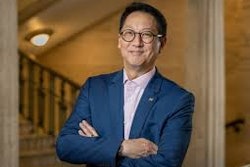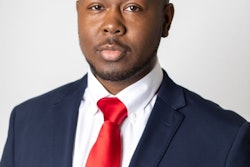Community College Faculty
Though pursuing research can be difficult at two-year colleges, many scholars of color are drawn by the opportunities to teach an increasingly diverse student population
By Kathleen Kennedy Manzo
Columbus, Ga.
Twenty-five years ago, Dr. Marilyn Howard fit the classic profile of the community college student. A first-generation college student from a working-class family, Howard did well all through elementary and secondary school, but lacked academic guidance or traditional preparation for higher education. It was not until she attended Columbus State Community College here, then a technical institute, that Howard was able to tap into her intellectual potential and, in the process, gain a lifelong appreciation for the two-year school.
Today, Howard is the picture-book community college professor. She thrives on mentoring students from diverse and nontraditional backgrounds as they develop their talents and discover their niche. And she is dedicated to life in the classroom.
“I wanted to teach,” says Howard, who is a history professor at Columbus State.
“I like to do research and I like to write, but I think of myself as a teacher. The community college is one of the last bastions of teaching in higher education.”
Like many of the nation’s minority faculty, Howard, who is African American, was drawn to a career on a two-year campus because of her own experiences as a student, the comfort of the diverse environment and, ultimately, her belief in the open-access mission on which community colleges are built.
Although there is conflicting data about just how many faculty of color make their professional homes at two-year institutions, community colleges have long attracted African American, Hispanic and American Indian academics. Drawn by the diversity of the student body, the employment opportunities and the potential for gaining experience in the classroom, many professors of color begin their higher education careers at two-year schools.
A Popular Launch Pad
A recent study on faculty at public community colleges, commissioned by the American Association of Community Colleges in Washington, D.C., asserts that about a third of minority faculty in all of higher education and some 44 percent of the part-time ranks are employed at two-year schools.
Tronie Rifkin, of the Evaluation and Training Center in Los Angeles, authored the study. She argues that until recently, “community colleges were more likely than other sectors to employ women and minorities as members of the faculty.” Recently, however, “the supposed lead that community colleges had in the proportion of minorities that teach at their institutions is shrinking,” she writes.
This new trend is attributed, in part, to more aggressive efforts by universities to diversify their ranks. While nearly one in five new faculty hires at research and doctorate degree-granting institutions are identified as people who come from racially or ethnically under-represented groups, the latest federal statistics indicate that just 15 percent of those hired at community colleges are faculty of color.
But it is generally agreed that many two-year schools, particularly those in urban areas and diverse suburbs, appear to be well ahead of their four-year counterparts in creating a diverse professorial corps.
Surveys have echoed the reasons highlighted by Howard.
“The missions of teaching and service are attractive to minority faculty,” says Ronald Opp, an associate professor of education at the University of Toledo who has studied community college faculty. “Community colleges are attracting more students of color, and, in turn, that attracts more faculty of color.”
Opp points out that the requirements to teach at two-year institutions — generally a master’s degree — draw minority faculty who cannot or choose not to seek a doctorate in their discipline. That goes for their White colleagues as well.
In 1997, for example, about two-thirds of full-time faculty in public community colleges held master’s degrees, while just one-fifth had earned doctorates. The percentages are nearly the opposite at their four-year counterparts.
But, like Howard, many faculty members with the qualifications to pursue work at senior-level institutions still opt for community college positions. Not diverted by the seeming greater prestige afforded their four-year colleagues, many faculty of color say they have found their passion at the two-year institutions.
Several years ago, like many of her peers beginning careers in cancer research, Dr. Nouna Bakhiet had to decide whether to go to work in industry or at a university laboratory. While she was completing her postdoctoral work at a research center in La Jolla, Calif., Bakhiet decided to gain some experience and extra income teaching introductory biology courses at a community college nearby.
“I fell in love with the system,” says Bakhiet, now a professor at Southwestern College in Chula Vista, Calif. “I was drawn to the all-teaching environment and the flexibility to do research as well.” She has since been driven by her desire to help prepare undergraduates early for life in the lab. As part of a program sponsored in part by the National Institutes of Health, she introduces biology and chemistry majors to research techniques much earlier than they would experience them otherwise.
“I’ve seen other people come to the community college because they couldn’t find any other work,” Bakhiet says. “But while I have a complete passion for bench work and research, I am also a very talented teacher. Both [needs] are quenched at the community college.”
As a Black female scientist, Bakhiet also cherishes her role as a model for her students of what they can achieve.
That added benefit is not lost on community college administrators, the best of whom, experts say, pursue diversity as one means of inspiring success among minority students. Often administrators with an eye to the future will encourage their own students to think about returning after completing higher degrees.
“I think community colleges work very hard in every instance to represent by diversity the constituency they serve,” says Dr. Suanne D. Roueche, director of the National Institute for Staff and Organizational Development at the University of Texas at Austin. “Many community colleges are into growing their own.”
Ann-Marie John, a part-time nursing instructor at Monroe Community College in Rochester, N.Y., came up through the associate’s degree ranks.
“I think part of the appeal is my personal experience,” John says. “One of the things that attracts me a lot is being able to help students who at whatever point in their life experience are facing multiple challenges and balancing multiple priorities . . . you see the joy and outcome first hand.”
Finding and Keeping Faculty of Color
Despite the appeal, most community colleges still find it a challenge to achieve and maintain sufficient diversity in their faculty ranks.
At Prince George’s Community College, in Largo, Md., for example, there has been a concerted effort for more than a dozen years to bring more faculty of color to campus. That initiative has yielded some big diversity gains, but the college still has a long way to go to before its faculty reflects the diversity found among its student body.
Prince George’s is ranked among the top 20 of more than 1,100 two-year institutions in the percentage of Black faculty. According to a Black Issues analysis of 1997 data from the U.S. Department of Education, 23 percent of Prince George’s faculty is of color, compared to a student body that is more than 70 percent minority. Only a handful of the nation’s community colleges have done better, and most of those are located in the center of metropolitan areas.
The difficulty with sustaining diversity may stem from the disproportionately small pool of minority applicants, as well as competition with other colleges and universities that have launched their own recruitment efforts. Ultimately, some observers say, community colleges must continuously create an environment where talented faculty of color can thrive.
“There has got to be a clear message at the highest levels that this is a priority,” says Dr. Ronald Williams, president of Prince George’s Community College. Williams also has headed systems in Chicago and Philadelphia. “You’ve got to put structures in place and you’ve got to have the courage of your convictions. You can’t allow the normal kinds of impediments to divert you from your goal.”
Under Williams, the college has hired nearly six dozen new faculty members. Nearly half have been faculty of color.
Mary Brown began agitating for more diversity at Prince George’s more than three decades ago, when the college served a largely White, rural population. The African American English professor, who has a law degree, anticipated changes down the road that would lead to a reverse in the local demographics. Located just outside Washington, D.C., Prince George’s is now home to one of the largest populations of middle- and upper-class Black residents in any county in the nation.
Brown has resisted the temptation of more prestigious positions several times, she says, because she feels a part of Prince George’s as well as the surrounding community. She has found her career to be extremely challenging. She also has been able to lead a life of service and activism over the years, inspiring local faculty and students.
“A lot of the action [in education] is happening at community colleges . . . both
because of the diversity of the student body and the innovative teaching opportunities,” she says.
Teaching vs. Research
Though some observers say the competition with upper-level institutions is
overstated, there is an increasing disparity between the proportions of qualified faculty of color and the large populations of minority students that the community colleges serve. There also are significant differences in salaries, benefits and workloads.
Community college faculty members, for instance, spend more time in the classroom and with students than at any other level of higher education, according to Rifkin. They average 15 class hours, as much as 50
percent more than their four-year peers, and up to 150 percent more than full professors at major research institutions.
While Southwestern’s Bakhiet does not find the heavy teaching load a deterrent to doing research, she admits it does limit her scholarly pursuits somewhat. And although Howard, the Columbus State professor, was able to complete her dissertation while teaching and has since squeezed in some writing projects, she has felt that her 20-hour teaching schedule can be a drain on her intellectual life.
“At the junior college, the workloads are fierce,” she says. “Even if you are at a really good institution, you are not going to have the kind of scholarly life that you can have elsewhere.”
At 44, Howard admits that she hears her academic clock ticking.
“If I’m going to have a scholarly life I’m going to have to shake a leg. So do I stay [here] or leave?” she asks. “I’m torn.”
Prince George’s Williams says administrators must take those concerns seriously. Although it is nearly impossible to offer the kind of research opportunities that four-year institutions do, he tries to provide “encouragement, opportunity and incentive for community college faculty to continue intellectual activity in their discipline,” because it informs teaching and gives them more satisfaction in their careers.
While Howard’s counterparts across the country have also felt the tug of higher level positions, some may feel there are few better opportunities.
But for others, the tug of the community college is too great to let their minds, or their careers, wander for too long in the university realm.
“Community college teaching “lacks in some people’s minds the pomp and circumstance of the four-year experience,” says Terry Davis, a professor of health education at Southwestern College. “But no matter what level you teach, we are all striving for giving an excellent education to our students and helping them reach their goals.”
David Duncan, an associate professor and English department chair at Palm Beach Community College’s Lake Worth Campus, agrees.
“This is where I’m supposed to be,” he says. “I’m a teacher and the two-year
college is a teaching institution. I’ve found my niche.”
© Copyright 2005 by DiverseEducation.com


















